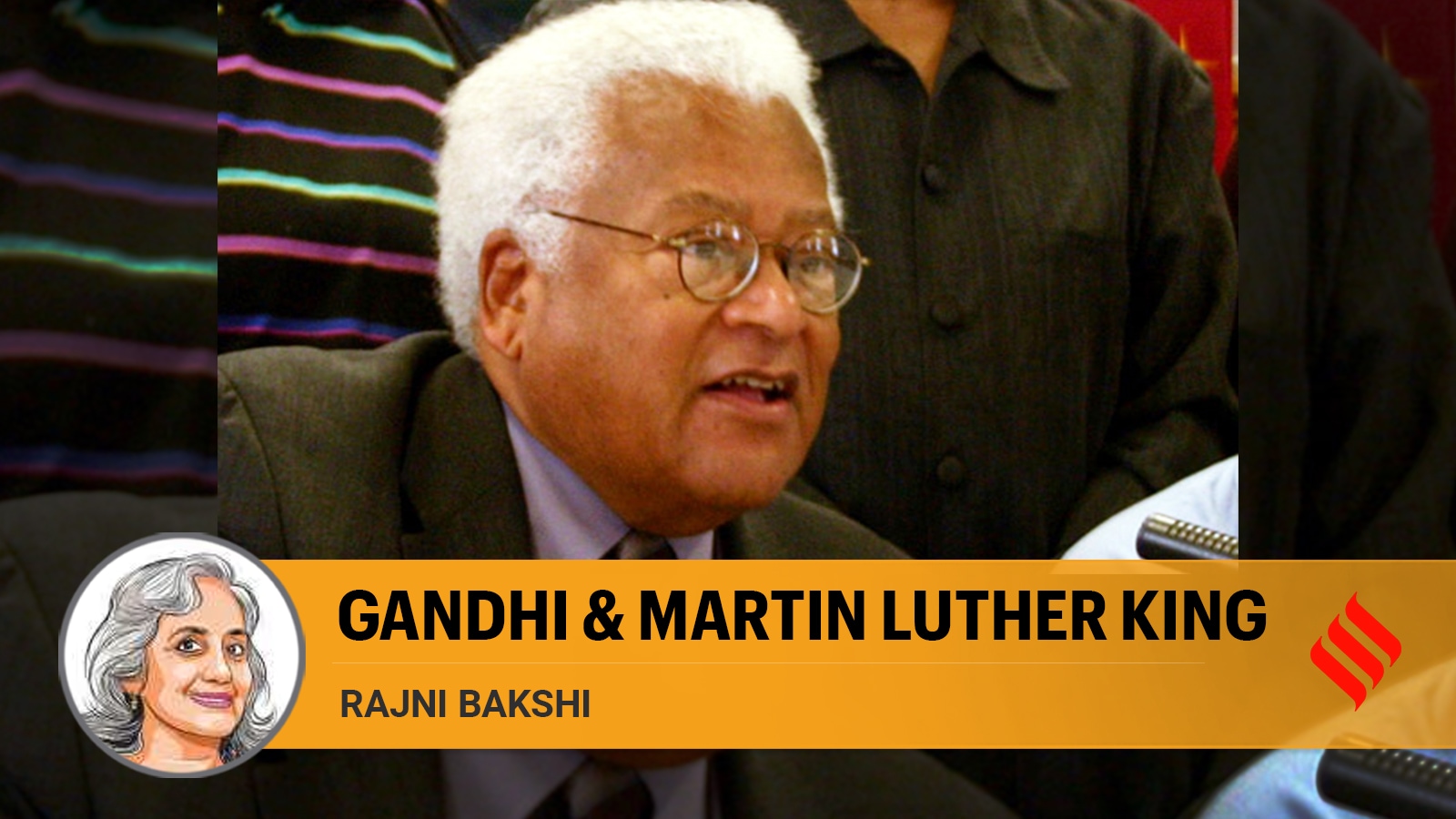It is rare that a single individual carries an ideal across continents in ways that make it more practicable. James Lawson, American non-violence activist and trainer, was such a person. In most listings of India’s influence in the world, Lawson may barely find a mention. He served as a key link between the Gandhian non-violence of India’s freedom struggle and the struggle against racism in the US.
Lawson, who died on June 9 at the age of 95, leaves behind the legacy of having inspired countless movements for justice through non-violence. Should we see activists like Lawson as outliers? Or is there possibly an anchor here for defiant optimism?
While in high school, Lawson had already begun a inward journey. From an early age, he was clear that “turn the other cheek, pray for the enemy, see the enemy as a fellow human being” were not passive principles. Lawson knew that these were potentially the building blocks of an active resistance movement.
In the early 1950s, Lawson refused to be drafted into the American army and spent 13 months in prison. After being released in 1953, he accepted a position to teach athletics at Hislop College in Nagpur. Over the next three years, studied the theory and practice of nonviolence — learning from the followers and fellow travellers of Mahatma Gandhi.
A lifelong United Methodist pastor, Lawson later said in an interview with ‘Fellowship Magazine’: “I combined the methodological analysis of Gandhi with the teachings of Jesus, who concludes that there are no human beings that you can exclude from the grace of God.” During Gandhi’s lifetime, several African-American activists had engaged with him and exchanged notes. Lawson’s unique contribution was that he drew on his study of Gandhian nonviolence to develop practical methods and training tools that empowered the African-American struggle for equal rights and justice.
Lawson was still in India when the Montgomery Bus boycott began. This protest campaign, between 1955-56, opposed the racial segregation of public buses in Montgomery, Alabama. It was as a member of this movement that Rosa Parks refused to surrender her bus seat to a White person, was arrested for this action, and became a global icon in the fight against racism.
By the time Lawson returned to America in 1956, the movement led by Martin Luther King Jr had gathered momentum. But there was a long journey ahead and King knew that this required intensive training. At King’s insistence, Lawson moved to Nashville, Tennessee, and began working across the southern US to recruit and train thousands of direct-action activists. The militant nonviolence, which Lawson taught, involved the systematic use of nonviolent pressure by interracial teams of activists who would sit at lunch counters reserved for White people, defying segregation laws.
Martin Luther King Jr. later celebrated Lawson not only as a crucial figure in the American nonviolent civil rights movement but as a leading theorist and strategist of nonviolence in the world.
King’s assassination in 1968 did not shake Lawson’s faith, instead his resolve seemed to be further strengthened. Lawson visited King’s assassin, James Earl Ray, in jail and befriended him. Thirty years later, as Ray was dying in prison, it was Lawson who visited the inmate on his deathbed and later conducted the funeral service.
To the very end, Lawson was a loud and passionate opponent of America’s use of military force in the world. In a 2022 interview, Lawson described the US as “the number one enemy of peace and justice in the world.”
For Lawson, the Black Lives Matter movement, which brought the struggle against racism to the forefront again, is a call “for the dismantling of the old forms of racist violence that we have taken for granted and replacing them with new forms of kinship that will allow us to be a far stronger nation…”
However today, across the world, this quest for new forms of kinship is facing unprecedented challenges as “cancel culture” is equated with being progressive. This is partly because it is easier, maybe even comforting, to think the worst of your opponent. Demonising your opponent arouses passion and more readily grabs public attention.
Therefore, the legacy of Lawson is paradoxically both a beacon and an anchor. It will keep drawing in those who can even faintly see that love can be an active force in the struggle for justice. And, thanks to intensive documentation of the methods of nonviolence training that Lawson developed, he will also serve as an anchor for those who seek practical guidance on the path of defiant optimism.
The writer is founder of the YouTube channel, Ahimsa Conversations



